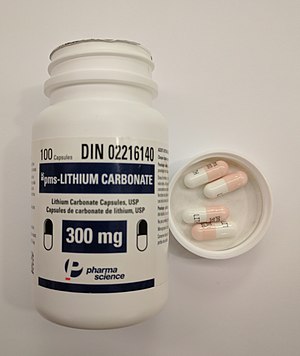
Lithium poisoning

Lithium toxicity, also known as lithium overdose and lithium poisoning, is the condition of having too much lithium in the blood. This condition also happens in persons that are taking lithium in which the lithium levels are affected by drug interactions in the body. Lithium toxicity, also known as lithium overdose and lithium poisoning, is the condition of having too much lithium in the blood. This condition also happens in persons that are taking lithium in which the lithium levels are affected by drug interactions in the body. The toxicity falls into 3 categories: acute, chronic, and acute on chronic. Acute toxicity is a single ingestion, without prior exposure to lithium. This includes events such as a child who unintentionally ingests the drug or intentional self-harm ingestion, without previous exposure to the drug. Chronic toxicity occurs in people who accumulate high levels during ongoing therapy. Acute on chronic occurs in persons in ongoing therapy with an acute ingestion of excessive amounts either accidentally or intentionally. When lithium overdoses produce neurological deficits or cardiac toxicity, the symptoms are considered serious and can be fatal. The severity of the symptoms is graded with lithium concentration on the range of mild, moderate, and severe. The normal serum lithium concentration should be between 0.6-1. Mild intoxication is defined as lithium concentration between 1.5-2.5 mEq/L. Moderate intoxication is serum lithium concentration between 2.5-3.5 mEq/L. Severe intoxication occurs with serum lithium concentration greater than 3.5 mEq/L. Severe intoxication presents with coma, hyperthermia, and hypotension. In acute toxicity, people have primarily gastrointestinal symptoms such as vomiting and diarrhea, which may result in volume depletion. During acute toxicity, lithium distributes later into the central nervous system causing dizziness and other mild neurological symptoms. In chronic toxicity, people have primarily neurological symptoms which include nystagmus, tremor, hyperreflexia, ataxia, and change in mental status. During chronic toxicity, the gastrointestinal symptoms seen in acute toxicity are less prominent. The symptoms are often vague and nonspecific.
